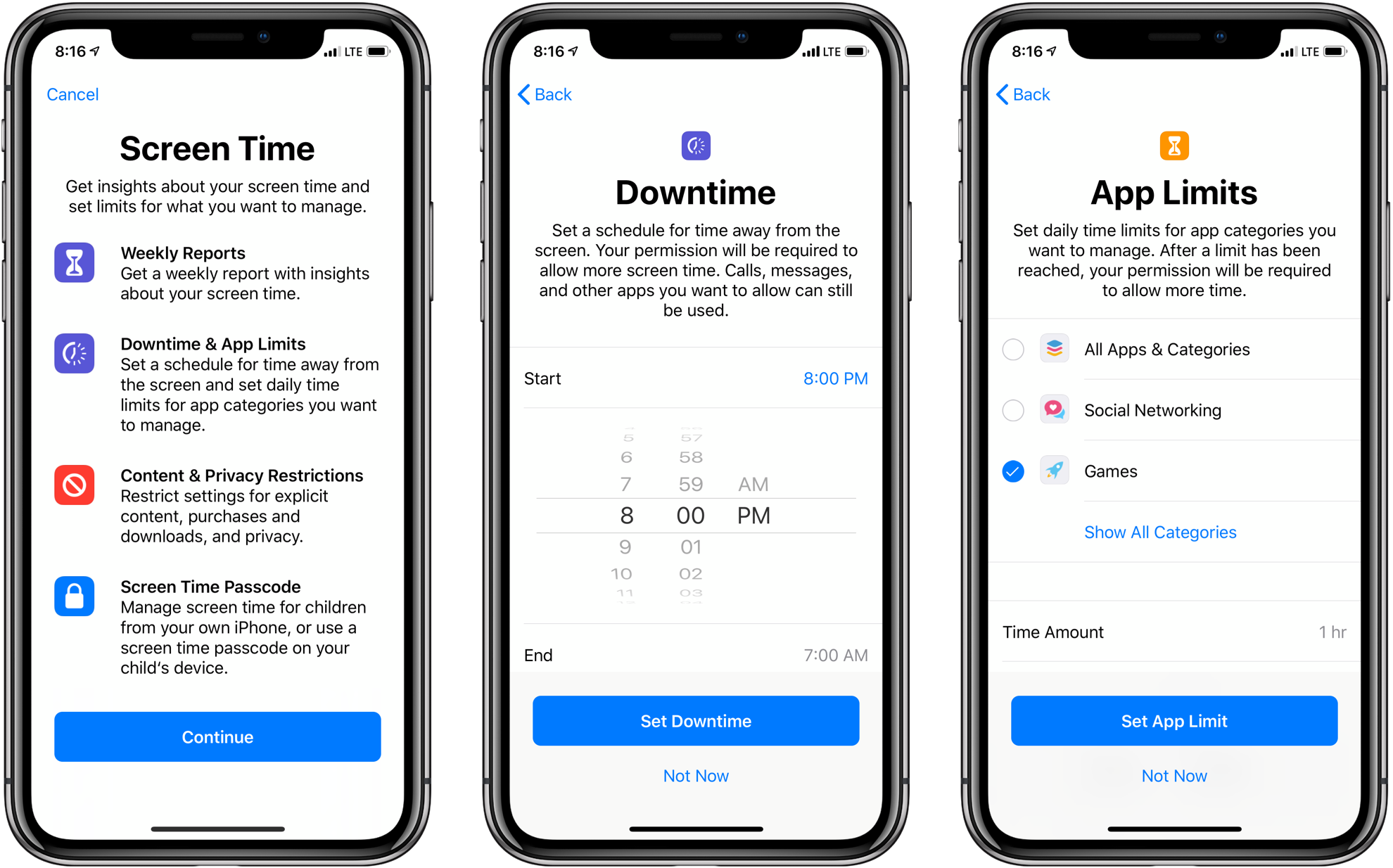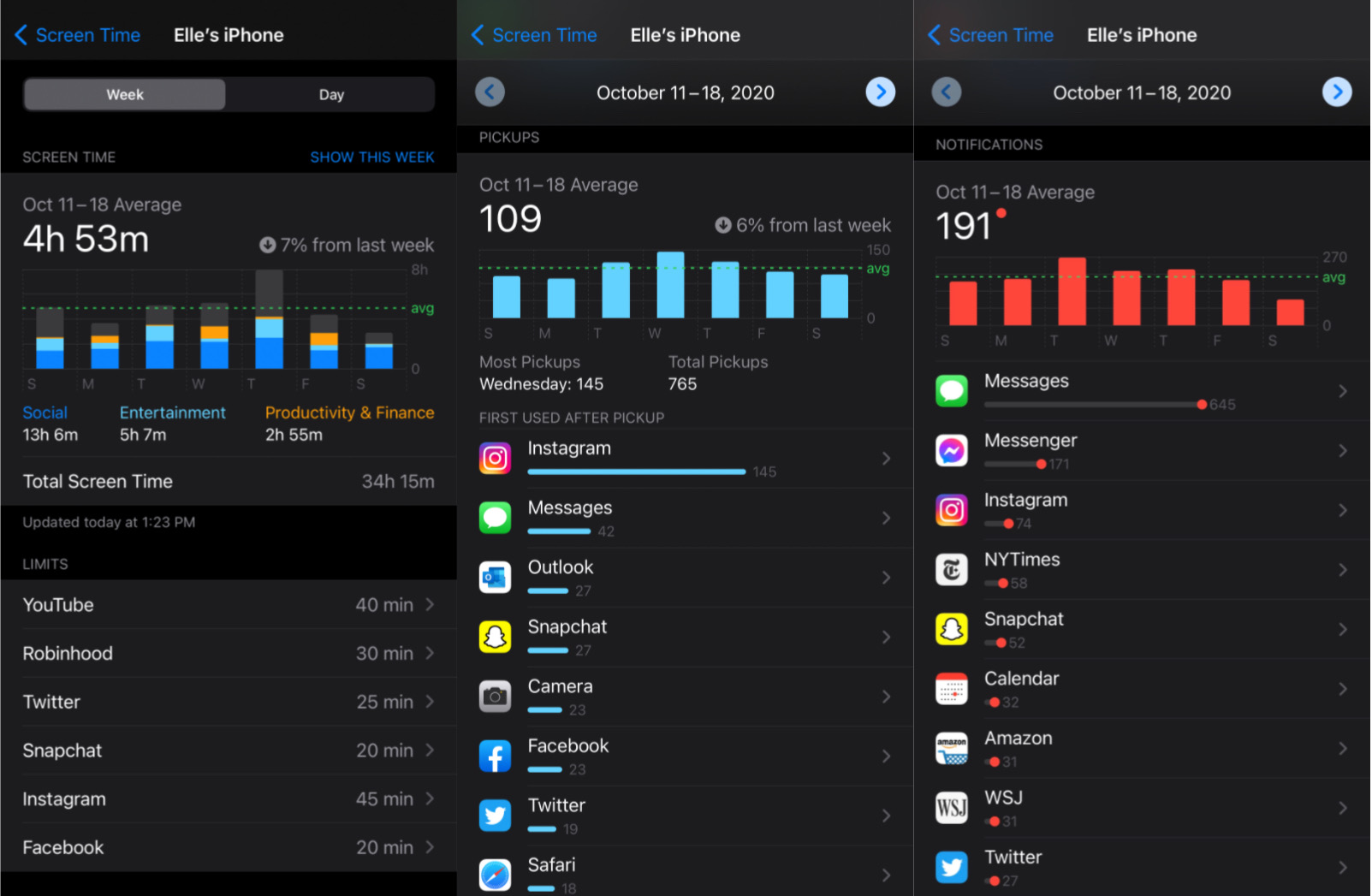Assignment 2 - Reflection on Digital Wellbeing
What is Digital Wellbeing?
Digital wellbeing is a difficult term to define. In various studies concerning measuring, analyzing, and critiquing digital wellbeing, the overarching message of the phrase is how healthy a user is, both physically and mentally, in their engagement with technology. We spend an overwhelming amount of time being surrounded by technology. Some reasons are: (1) expectations of outside forces, such as checking your email after work and responding to Slack messages outside of class hours, (2) habit, (3) fear of missing out.[1] Although technology helps us stay engaged and up to date with information, this can also be overwhelming and people find it difficult to disconnect from. Especially with the increase in the reliance on technology upon COVID-19, it is more important than ever that self care overall well being includes how we behave on the Internet towards each other and how much time we spend our days digitally.

From my experience, the aspect of digital wellbeing that changed the most since COVID-19 is screen time, which affects both physical and mental health as well as the engagement level.
In June 2018, Apple introduced new features to the iOS 12 that would reduce interruptions and manage screen time. [2]
As of November 2020, some of its features are:
- Downtime: set a schedule for time away from the screen
- App Limits: set daily time limits for individual apps or categories
- Communication Limits: limited to Apple communication apps, such as Phone, FaceTime, and iMessage; allows users to schedule a communication downtime where they can block off contacts for a certain amount of time
- Always Allowed: choose apps that can be available anytime, overriding downtime
Reflecting on My Digital Wellbeing
Ways to Increase Digital Wellbeing
At the 2019 Computer Human Interaction (CHI) Conference in Glasgow, Scotland, a group of 32 researchers from academia and industry gathered for a workshop on designing for digital wellbeing.
[3]
Here, researchers agreed that screen time is not the only way to define digital wellbeing, but just one of many other aspects, such as online harassment, employee engagement, and physical health.
However, today in 2020, many people report that their screen time often doubles what they used to during work from home or online classes.
[4]
The popular category is Social Networking, which includes apps like Instagram, Twitter, LinkedIn, and Facebook. Because we are partitioned from the rest of the world, we feel an urge to stay
connected virtually.
Although there is no quick fix to how everything must be virtual, we can still cut down on unnecessary times we are looking at the screen and staying constantly connected all the time.
One way is to utilize Apple's Screen Time feature (Android products also have a same feature) to limit how much we look at certain apps.
 Above is a screenshot that overviews my own Screen Time during the week of October 11-18.
Above is a screenshot that overviews my own Screen Time during the week of October 11-18.I gave myself a certain limit for apps I frequent in my free time, almost as a habit. Do I need to be scrolling through Instagram when I have some free time? Absolutely not! Do I do it anyways? Yes I do. But if I give myself a reminder that I have already spent a certain number of time on Instagram, I'm less likely to visit the app again that day, saving myself and my eyes some well-deserved time offline to do other things.
Future Design
Even though we acknowledge that technology is something that we can no longer live without, we also need to find a way to go without it from time to time.
When designing a product, it is important to make a product that creates high level of engagement and create the feeling of its necessity for users.
However, a good product should also allow user to feel that they can take time away from it for their physical and mental health.
Finding this balance is difficult. But to answer the question, "How do we maintain a good digital wellbeing?", we as technologists should study
a design that encourages both engagement and disengagement to keep our users healthy both online and offline.